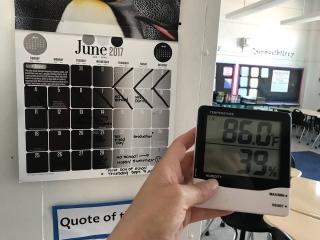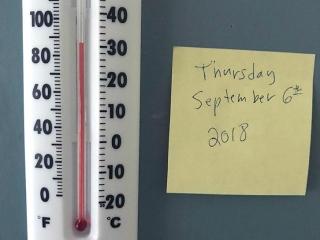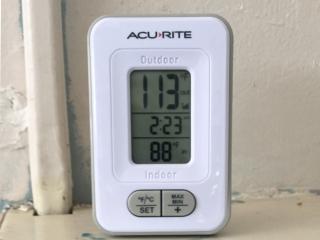With temperatures spiking as high as the mid-90s in early September, many New York City public school teachers and students returned for the new school year to find their classrooms no refuge from the summer heat. The absence of air conditioning in many schools made both teaching and learning conditions arduous, prompting the UFT to launch a campaign to fast-track city and state projects to air condition every New York City classroom.
“I wrote my students’ names and birthdays on the whiteboard and the magic marker actually melted,” said Cindy Migliore, a prekindergarten teacher at PS 21 in Queens. “The children were complaining all the time about the heat.”
Migliore was one of the nearly 400 UFT members who responded to the union’s request to document conditions in hot classrooms. Where problems had a straightforward solution, such as broken equipment, the UFT’s Health and Safety Department intervened to assist.
In April 2017, Mayor Bill de Blasio vowed to install air conditioning in all classrooms by 2022. The mayor set aside $28.8 million to buy the units and another $50 million in the five-year Capital Plan to make electrical upgrades to support the installation of air-conditioning units. The mayor said the city would give priority to summer school sites and schools that have the wiring already in place to accommodate the units. At the time of the announcement, city officials said roughly 11,500 classrooms — representing about a quarter of all classrooms across the city — lacked air conditioning.
By mobilizing members and painting a vivid picture of the impact on children and teachers, the union will look to push the city this year to increase the funding and expedite its timeline for providing air conditioning in all schools.
“With global warming, these intolerable heat conditions will become more frequent in our schools,” said UFT President Michael Mulgrew. “Those responsible for fixing the problem need to take faster action.”
Migliore tried to beat the heat by keeping herself and her students hydrated, turning the classroom lights off and running fans, but it was still too much to bear. “It’s hard to concentrate on anything other than feeling hot,” she said.
Joanne Genova, a teacher at PS 193 in Queens, said her classroom thermometer read 91 degrees at one point. “It was horrible,” she said. “You could fry an egg on my desk with the heat coming through that window.”
Research shows that conditions like these affect academic performance. Students exposed to high temperatures without air conditioning scored more than 13 percent lower on tests than their air-conditioned peers in a 2016 study conducted by the Healthy Buildings Program at Harvard’s T.H. Chan School of Public Health.
“It’s really difficult to get the children to focus when it’s 88 to 90 degrees in a room,” said George Geist, who teaches English language learners at IS 141 in Queens.
Rachelle Travis, a science teacher at PS 288 in Brooklyn, pointed to the health risks.
“What does that do to your body?” she asked. “Last year, I was six months pregnant and dealing with that hot temperature. It went on for most of September.”
Travis said two of her students have asthma and used their inhalers during the heat wave because of the strain. “It’s crazy that they should have to deal with that,” Travis said. “Why does a child have to use her asthma pump just for sitting still in a classroom?”
Travis praised her principal for working to solve the problem and bringing air conditioning to many of the classrooms, but said she’s worried other schools aren’t so fortunate.
“I eagerly await an air conditioner,” said Migliore. “I’ve been here since 2002, struggling through the heat each year.”


